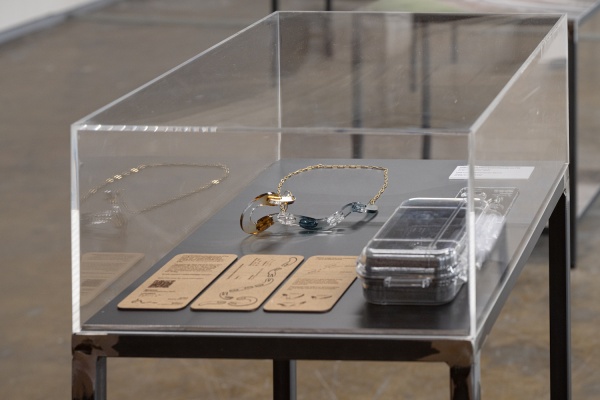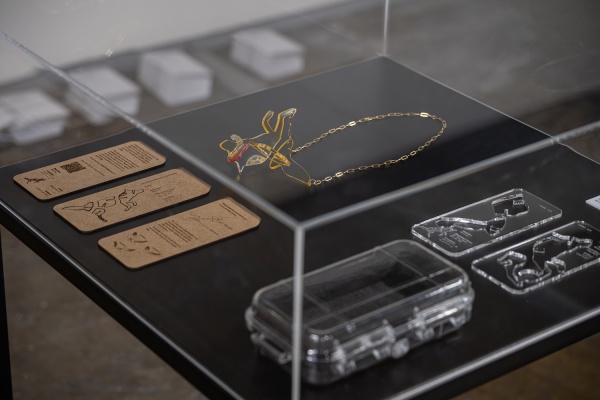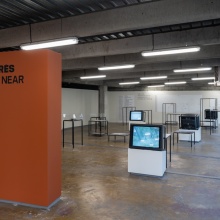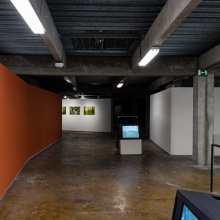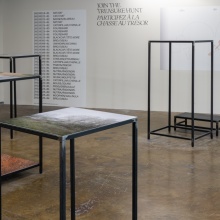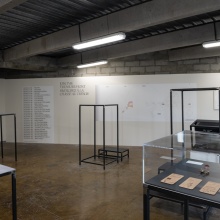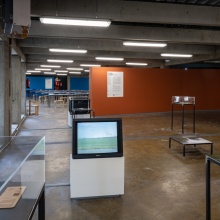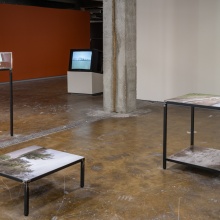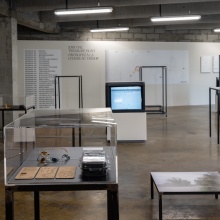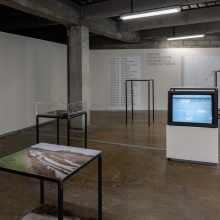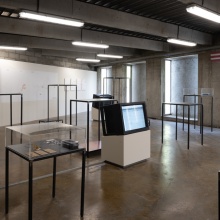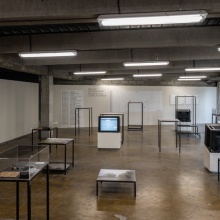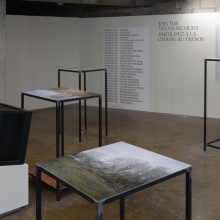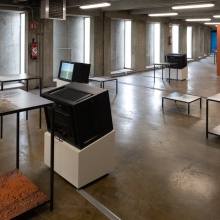HERE NEAR presented three projects on a series of layered and unfolding threats to the ecology of Arles and its surroundings. Since 2022, Mathieu Asselin (FR/VE), Tanja Engelberts (NL) and Sheng-Wen Lo (TW/NL) had each worked on site-specific research, addressing the effects of socioeconomic activities on local ecosystems and their inhabitants. Charting manufacturing, pollution, water systems, transportation and animal life, these makers reveal how the Anthropocene – an unfolding geologic epoch characterised by humanity’s accelerating impact – is reflected in the area.
In Hunting the Tarrasque, Mathieu Asselin studies the Fibre Excellence production plant, some ten kilometres north of Arles. Part of the Indonesia-based Asia Pulp and Paper Group, Fibre Excellence specialises in the production of paper pulp. With an activist’s vigour, Arles-based artist is exploring various types of pollution emitted at the site, considering the effects of chemicals, noise and light on air, soil and water. Elsewhere, Tanja Engelberts works with the Rhône – a river transformed drastically by its intersections with hydroelectric facilities, the chemical industry, and several nuclear power plants.
We Exhale sees Engelberts follow the Rhône from Arles to its source, the Rhône Glacier in Switzerland; she attempts to grasp what happens en route that makes the river so unsuitable for swimming by the time it reaches Arles. The search results in a video work, and a series of photographs made from the Rhône’s perspective – then translated into sculptural ceramics, glazed with the river’s clay.
Finally, Sheng-Wen Lo’s Watch Out is rooted in Camargue, France’s largest wetlands, and home to more than 400 species of birds, mammals and reptiles. The artist reflects on the phenomenon of roadkill – the increased mortality of local fauna due to speeding cars on the wetlands’ roadways. Lo proposes a treasure hunt, planting jewellery pieces inspired by found roadkill across the region. His photographs and video works serve as clues in the game, requiring participants to slow down radically.
Together, these projects point to the varying degrees of influence and responsibility that shape this troubling reality. Where Asselin addresses the notion of the Capitalocene, positing the responsibilities of companies as greater than that of an universalised “human”, Lo speaks directly to citizens at the individual level. Engelberts, meanwhile, touches upon a phenomenological responsibility – that of tuning in to the perspectives of non-humans. The exhibition seeks ways to unravel the tightly-bound fabric of a complex territory. What is this place? Who are its actors? And how what happens here is connected to processes happening down the road, in a neighbouring country, or even across oceans? What seems far away may in fact be near – or even here.
The exhibition took place from July 3 to September 24, 2023.
Location: Monoprix, Boulevard Emile Combes, Pl. Lamartine, 13200 Arles, France.
This exhibition was a co-production by Rencontres d’Arles and FOTODOK.
The featured projects are developed with the support of Le Bureau d’Investigation du Réel: the organiser of The Shelter residency, where the artists worked between 14 February and 29 March 2022.
The exhibition was supported by the Embassy of the Kingdom of the Netherlands in France, the City of Utrecht, the Mondriaan Fund, and MIAP Foundation.
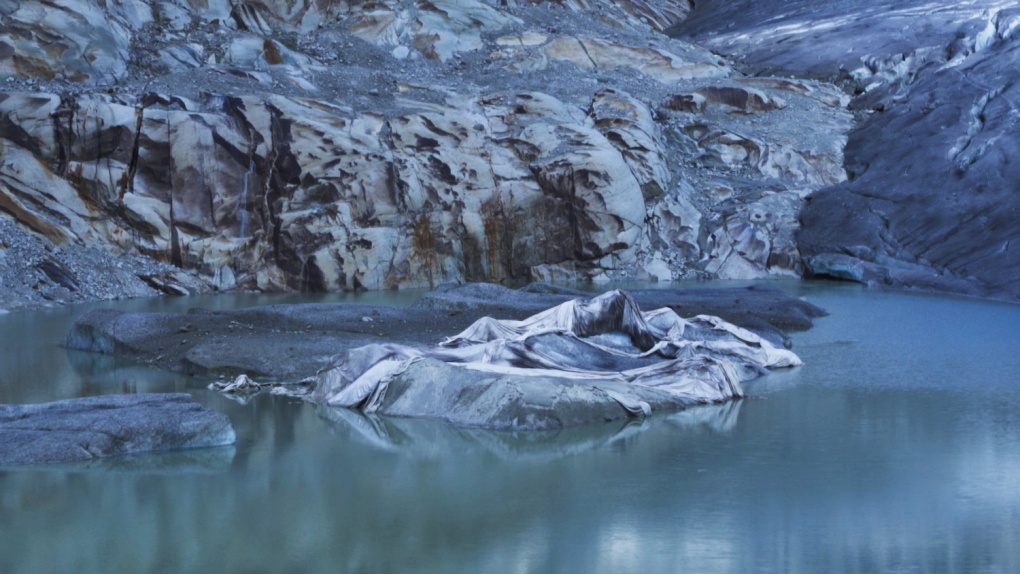
Tanja Engelberts
Dead River
2022-2023
In the 1950s, the Rhône River was declared dead. With the development of hydroelectricity, the river changed drastically in post-war France. New canals took over the old river, dikes were built against flooding, the river was slowly dammed in the name of science and technology. Furthermore, with its fast flow and cool temperatures, the Rhône provided an ideal setting for the development of several nuclear power plants and chemical industry sites. The river became a hydraulic object, the boundaries between nature and technology slowly blurred.
The river – once the symbol of an uncontrollable force – had been conquered, but how would the river best describe itself? Inspired by Bruno Latour's The Parliament of Things, in which the philosopher argues that laws and politics should not be centered only around people, but should respond to all things and life forms, Tanja Engelberts examines the Rhône from an animistic point of view. She tries to imagine what it’s like to be a fast-flowing river, slowly filling with Anthropocene-era artifacts over a 600 kilometer stretch. A landscape steeped in chemical waste, that’s slowly disappearing due to climate change.
With a fast current, the Rhône originates in the glaciers of Switzerland, meandering to the south of France and ending in the Mediterranean Sea. Along the way, her waters absorb chemicals in the Rhône valley: sediment-carried fluoroalkyl (PFAS), radionuclides (radioactive material), plastic waste and pesticides. The sediment of the Rhône acts as a preservative; Roman artifacts over 2000 years old are still found there. For Tanja Engelberts, this silt became a symbol of the river’s power and its hidden history.
The artist made photographs from the perspective of the river itself, focusing on the meeting of water and riverbank – sometimes a natural barrier, but more often stone and concrete. On the riverbanks, Engelberts found a clay-like substance that she decided to work with, having tested it at attraction terrestre, a local ceramics studio in Arles. Where the Rhône has been subdued by hydraulic and nuclear technology, Engelberts wanted to adopt a technical and distant approach to her own way of working. Organic material and mechanical process intertwine here: the artist laser cuts photographs, creates reliefs, presses clay into them, and glazes her ceramic landscapes with clay from the Rhône.
The river breathes out. Organic materials which fill the water are slowly broken down through chemical processes, creating carbon dioxide (CO2). What sound does a river make when exhaling? Does this sound change as the river is poisoned, distorting and fading from its natural state?
Throughout the summer of 2022, Engelberts followed the river from the Mediterranean to its source in Switzerland, charting its transformations, its journey, and its many voices. Engelberts later collaborated with sound artist Liz Harris to form sensitive soundscapes from ambient noise combined with field recordings. Together, they created a poetic means to reflect on how a poisoned river might possibly exhale.
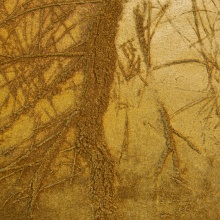
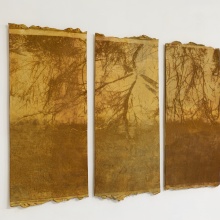
Tanja Engelberts (1987) was born in Deventer, the Netherlands, and lives and works in The Hague, the Netherlands. In recent years, Engelberts has worked on several projects related to the fossil fuel industry, focusing on the ways in which energy production shapes our landscapes. In 2021, she concluded a two-year residency at Amsterdam’s Rijksakademie. She has participated in further residency programmes at The Banff Center for Arts and Creativity (CA), The Ucross Foundation (USA), IK Foundation (NL) and Örö Residence (FI). Exhibited and published internationally, Engelberts’ works are also included in the collections of De Nederlandsche Bank (NL), De Brauw (NL) and Clifford Chance (UK). She is represented by Caroline O’Breen Gallery, Amsterdam.
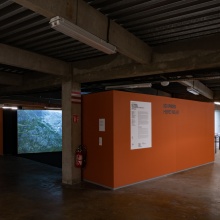
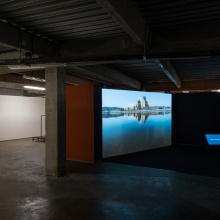
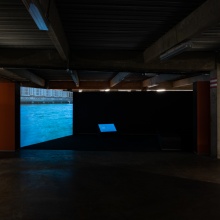
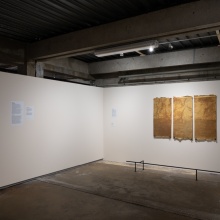
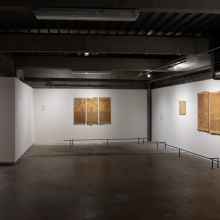
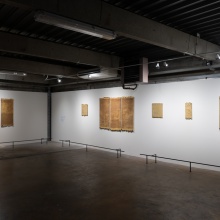
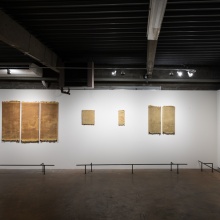
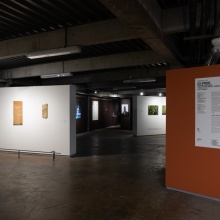
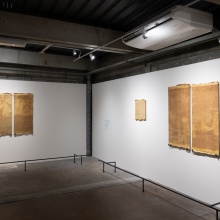
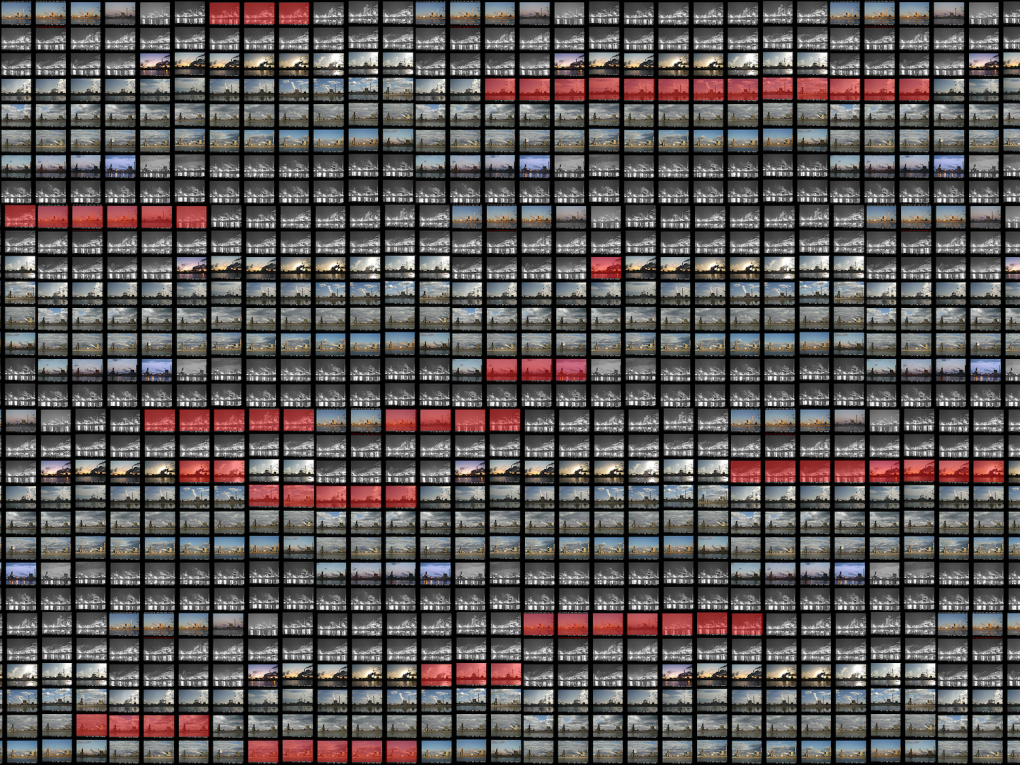
Mathieu Asselin
Hunting the Tarasque
2022-2023
On the banks of the River Rhône, ten kilometers North of Arles (the artist’s own hometown), you will find Fibre Excellence. This large paper mill factory forms part of the Indonesia-based Asia Pulp and Paper Group conglomerate, which specializes in the production and distribution of paper pulp. The plant is one of the biggest polluters of the Rhône: the region’s air, soil and water are all heavily impacted by its activities. The factory benefits from various government tax and financial incentives. Furthermore, through legal loopholes and constant restructuring plans that yield little to no results, Fibre Excellence continues to avoid the much needed modernisation of its decaying mill.
Hunting the Tarasque looks into different types of pollution – chemical, noise, and light – that the Fibre Excellence plant generates. Mathieu Asselin develops his project both as a concerned citizen, searching for answers in the place where he lives, and as an artist, exploring and applying combinations of photography, video, and sourced imagery. The work presents factual information and subjective representations, comprising five components: the context; the factory’s attempts at green-washing; research into sources of water contamination; studies of wind dynamics that visualize Arles’ exposure to contamination; and finally, the voices of the people who are actively involved in challenging Fibre Excellence’s operations.
Tarasque is a dangerous dragon-like mythological creature that, according to local legends,
inhabited the banks of the Rhône. Today, Fibre Excellence is the real untamed monster of Provence, which continues to do real damage to human and non-human beings alike.
This project was made in collaboration with the Civil Association of Les Flamants Roses du Trébon.
On the 6th of July 2023, Asselin co-organised with Extinction Rebelliona a demonstartion walking from the exhibition space of Monoprix in Arles to the central square of the city.
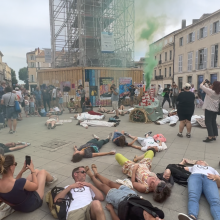
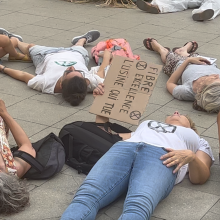
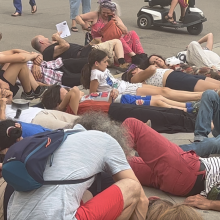
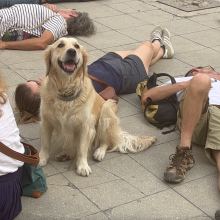
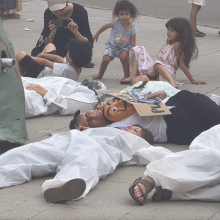
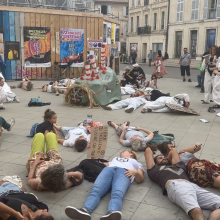
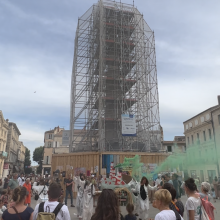
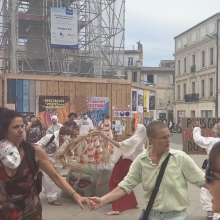
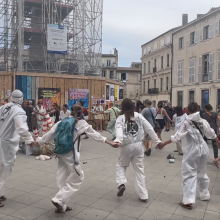
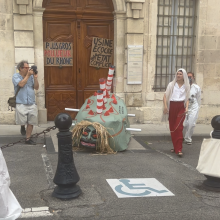
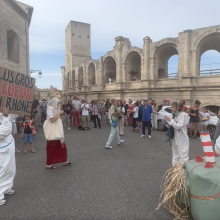
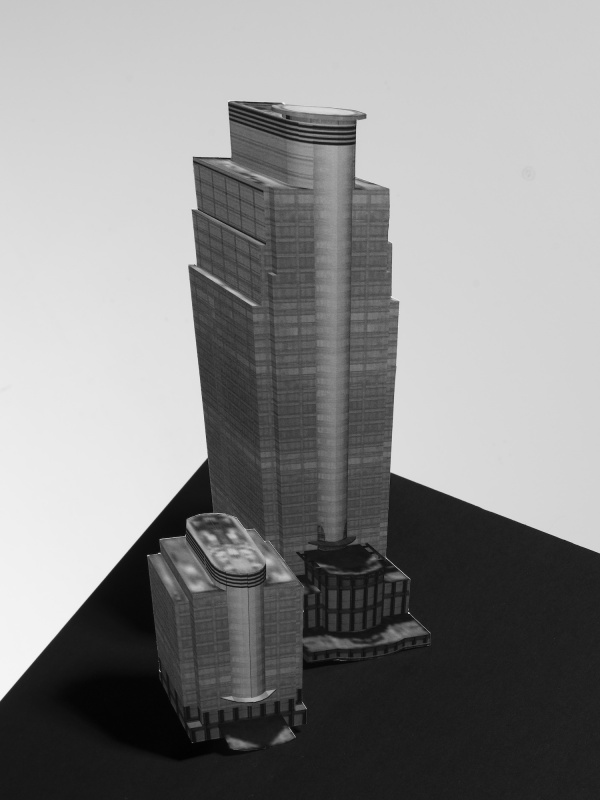
Mathieu Asselin (1973) was born in Aix-en-Provence, France, and lives and works in Arles, France. His work mainly consists of long-term investigative documentary projects. His book Monsanto: A Photographic Investigation won the Kassel Dummy Award in 2016; the Aperture Foundation First Book Award in 2017; and was shortlisted for the Deutsche Börse Photography Foundation Prize in 2018. His work has been exhibited at the likes of Les Rencontres d’Arles, Arles; The Photographer’s Gallery, London; Fotomuseum Antwerp, Antwerpen; and Hasselblad Foundation, Gothenburg. Asselin is a member of the editorial committee at Disclose, a professor at the Royal Academy of Fine Arts KASK, Gent, and a co-founder of double-dummy studio. He is represented by The Ravestijn Gallery, Amsterdam.
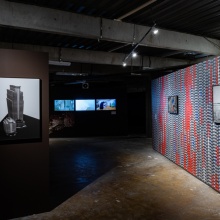
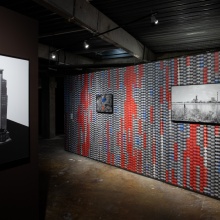
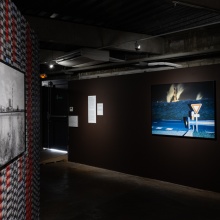
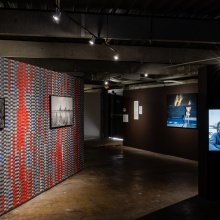
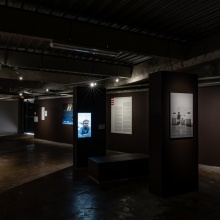
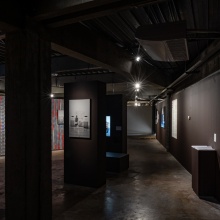
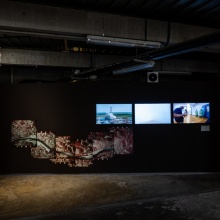
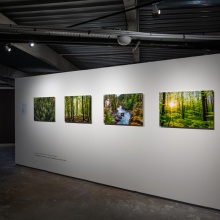
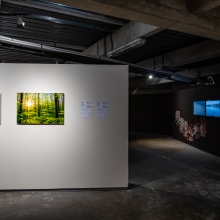
Sheng-Wen Lo
Watch Out
2022-2023
The Camargue hosts France’s largest wetlands, located between the Mediterranean Sea and the two arms of the Rhône delta. It is home to more than 400 species of birds, mammals and reptiles, including herons, coots, ducks, flamingos, nutria, skunks, badgers, and snakes. Animal life, however, is the subject of increased mortality rates – due to passing cars that regularly exceed 70 km/h on several roadways that dissect the wetlands. The local government has tried to encourage drivers to “slow down, or even stop and observe, photograph the beautiful landscape and ecology.” Sadly, the roadkill problem persists. How can human beings slow down and practice non-violence to non-human beings?
In the making of his project, Sheng-Wen Lo cycled 600 km through roadways in the Camargue and La Petite Camargue, documenting more than 30 instances of roadkill. He registered the species name, a 3D rendering, and the GPS coordinates of each of his discoveries. In collaboration with designer Ching-Hui Yang, the artist developed jewelry pieces based on his findings. These precious objects have since been returned to the locations where roadkill was encountered.
Watch Out is a treasure hunt, in which everyone is invited to participate. Each piece becomes the property of whoever finds it. Photographs and videos made near the jewelry’s hiding places, which feature in this exhibition, act as clues. Treasure hunters are urged to re-engage their senses: to observe, listen, compare and think. The game starts on 3 July 2023 and concludes on 31 May 2024.
This participatory game opens up a temporary scenario of reestablishing lines of sight between humans and the surrounding environment; the jewelry pieces themselves become a form of memorial for the animal lives lost on the tarmac.
Sheng-Wen Lo (1987) was born in Kaohsiung, Taiwan, and lives and works in Leiden, the Netherlands. Lo's works investigate the relationships between non-humans and contemporary society through a range of media, including images, installations, and games. He is an alumnus of the Rijksakademie, Amsterdam, and received an MSc in Computer Science from National Taiwan University. His works have been shown at Foam and World Press Photo in the Netherlands; The International Center of Photography in the USA; MMCA in South Korea; The National Gallery of Victoria in Australia; and the Taiwan Biennial, Taiwan. He was selected as a Foam Talent in 2021, and has received fellowships from De Nederlandsche Bank and the Prins Bernhard Cultuurfonds/Prince Claus Fund. Lo is represented by Avocado Art Lab, Taipei.
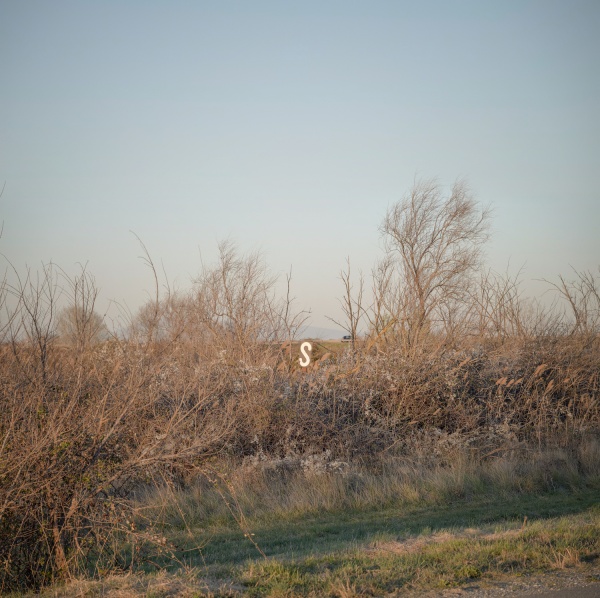
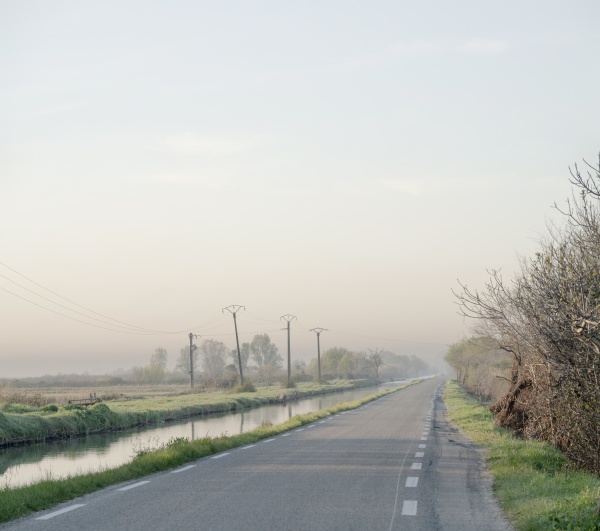
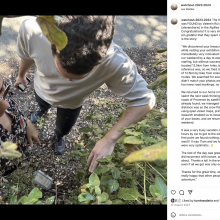
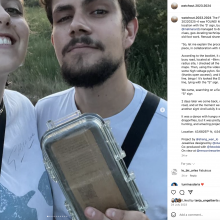
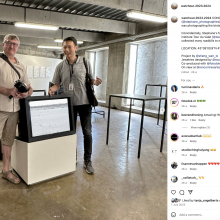
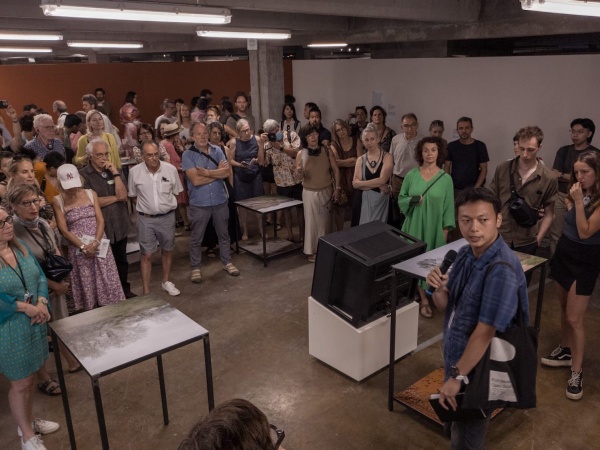
Sheng-Wen Lo leads an Instagram page of the project collecting the stories of people who participated in the treasure hunt and found the treasures.
And here you can download a catalogue with more information about the treasure hunt and the artist's personal notes.
